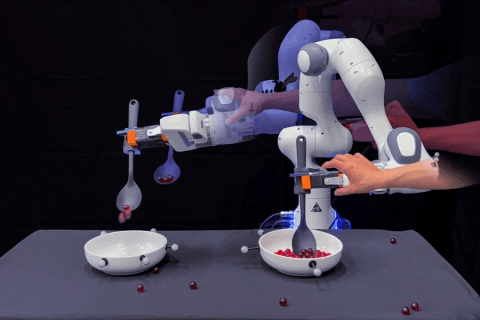MIT Research Unveils Self-Correcting Home Robots Powered by Language Models
In a significant leap forward for home robotics, researchers from the Massachusetts Institute of Technology (MIT) have developed a method allowing robots to autonomously correct their mistakes without human intervention. This development, which harnesses the power of large language models (LLMs), is set to be presented at the upcoming International Conference on Learning Representations (ICLR) in May.
Home robots, post-Roomba, have struggled to gain widespread acceptance due to various factors including cost, practicality, and the complexity of navigating household environments. A major hurdle has been the robots' inability to recover from inevitable operational errors, requiring human programming or intervention to resume functionality.

MIT's research addresses this challenge by incorporating LLMs into the robotics domain, providing a way for robots to understand and execute tasks with a degree of "common sense." Traditional methods rely heavily on pre-programmed responses to specific problems, which often fall short in the dynamic and unpredictable nature of home environments.
The study demonstrates a novel approach where robots learn to perform tasks through observation, breaking down actions into manageable sub-tasks. This method drastically reduces the need for manual programming of each sub-action by utilizing LLMs to interpret and label these steps in natural language.
A practical example given involves a robot trained to scoop marbles and pour them into a bowl. When disruptions occur, such as being knocked off course, the robot utilizes LLM guidance to identify its current step and how to adjust, allowing it to continue the task without starting over.
Grad student Tsun-Hsuan Wang, a lead researcher on the project, highlights the significance of this method, stating, "With our method, when the robot makes mistakes, we don’t need humans to program or give extra demonstrations on how to recover from failures."
This breakthrough not only represents a pivotal advancement in making home robots more adaptable and user-friendly but also signifies a step towards more intelligent and autonomous robotic assistants capable of seamlessly integrating into our daily lives. The potential for reducing human reliance on programming and intervention opens up new avenues for the broader adoption and development of home robotics.

Related Articles
Anthropic Researchers Uncover Vulnerabilities in Large Language Models
Anthropic researchers have identified a "many-shot jailbreaking" technique that exploits the extended context window of modern Large Language Models (LLMs), allowing them to provide answers to inappropriate queries after being primed with harmless prompts.


Instagram Founders' AI News App Artifact Continues Despite Shutdown Plans
Instagram co-founders Kevin Systrom and Mike Krieger have decided to keep their AI-powered news app, Artifact, operational beyond its planned shutdown in February 2024. Despite initial announcements of winding down, the app remains active, fueled by the founders' exploration of future possibilities for its survival.


Elon Musk’s X.ai Launches Advanced AI Model Grok-1.5, Elevating Chatbot Interactions
X.ai, the AI startup founded by Elon Musk, has introduced Grok-1.5, a generative AI model set to enhance the social network X with superior reasoning and expanded context capabilities.

